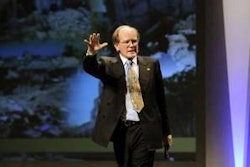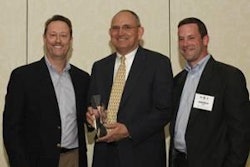
Positive outlook for meat demand
There is good news for world meat demand in 2010 because this is shaping up to be a bounce-back year as we see global economies recover from crisis, says Nan-Dirk Mulder, associate director of the food/agriculture research and advisory unit of Rabobank International.
In remarks to the Alltech Symposium in the US, he reported the expectation from International Monetary Fund data that world Gross Domestic Product (GDP) would grow this year by around 3% after shrinking into recession by 1.1% in 2009.
“More meat will be produced and consumed in 2010,” Mr Mulder declared. “Forecasts from the US department of agriculture are that global pork production will increase by 1.6%.
“But the great challenge for all agriculture is how to meet the fast-growing demand for meat products in the longer term. Between 2008 and 2018, the world is likely to need 20% more pork as well as 30% more poultry and 10% more beef. Another 190 million metric tons of grains and animal proteins will be required for feeding to animals by the end of that period.
“How to increase production to satisfy these requirements is one question. Another is, who will produce the meat? Rabobank’s estimates of the costs of production of broilers and pigs illustrate the continuing differences between countries.
In pigs, our estimate is that an average cost of Euro 1.40 per kilogram carcase weight in the European Union’s most efficient national industries (the Netherlands and Denmark) compares with Euro 1.04/kg in the US and only Euro 0.91/kg in Brazil. Among the other European countries the production cost per kilo is estimated at Euro 1.57 for Germany, Euro1.61 for Poland and Euro 1.62 for Spain.
“A new OECD report suggests that Russia (+4%) and Brazil (+3.5%) will have the highest growth rates in their meat production from 2009 to 2018. An analysis by Rabobank of the largest meat companies includes some Brazilian names, but it has more big players from the USA, Europe and China at present than from Russia. Currently, we find that Brazilian and US companies are driving the process of consolidation that continues throughout the meat industry.
“It may come as a surprise to discover that the beef sector is the most consolidated on a global level at present, while pork is the least consolidated of the main meats. The three largest beef companies between them hold a market share of around 20%. By comparison, the Top 3 in poultry hold only 9%. In pork the three biggest have a combined share of just 7%.
“When you look inside the pork sector you see big differences between countries for the size of the corporate producers and industry consolidation levels. We calculate that the Top 3 for pork in China account for only 5% of all production and in Russia the three biggest hold 12%. It is around 22% in the EU and 26% in Brazil. At the other end of the scale, the three largest American companies produce about 55% of all pork in the US.
“Big means more bargaining power, more scale for such aspects as research and the promotion of products and more opportunities for greater efficiency in production and distribution. The larger players can also be better prepared to manage the risk of greater volatility in the meat and grain markets as the bounce-back continues.
















